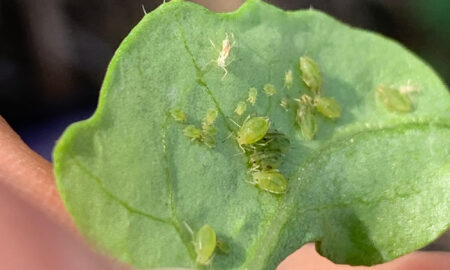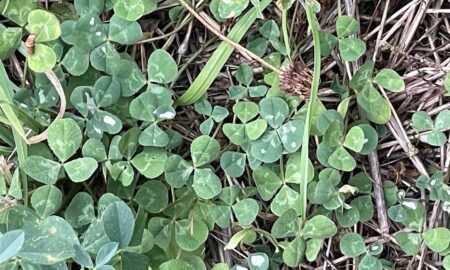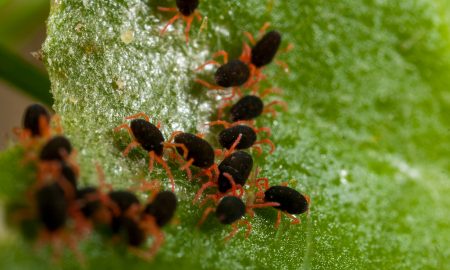Very high numbers of the black field cricket (Teleogryllus commodus) have been reported in Victorian cropping regions and also noted in urban settings.
While there are very limited management recommendations for this native cricket species, here are five points of information to help you understand this pest, including tips for monitoring.
More prevalent in surface cracking soils
While the black field cricket is widespread in Australia, they are more commonly found in soil types with cracking or stony ground (e.g. cracking clays). As a night-active species, these soil environments provide shelter during the day.
Cracks in the soil also offer shelter from dry conditions, and crickets will often move out of the ground and into the crop after rain events.
Not restricted to pastures
While black field cricket damage is often associated with pasture damage, this species has quite a wide host range including seed crops, emerging cereal crops, many field crops including sunflower, soybean and most pulses.
Crickets have ‘chewing’ mouthparts capable of eating through young stems, leaves, flowers and immature seeds. They can also cause damage by eating plant roots underground.
A warm season pest
The black field cricket is a warm-season species, having two to three generations between spring and autumn.
The good news for Victoria is that this species doesn’t persist through winter in cold areas and will over-winter in the egg stage.
In a typical year, as we head towards winter with increasingly cooler temperatures, we can expect the risk of black field crickets damage in pastures and establishing winter crops to drop.
However, in years with milder than average temperatures for autumn and winter (as predicted with 2023), we could see an extended season of activity.
Two monitoring methods
If you suspect crickets are responsible for chewing damage to emerging winter crops or are in a cricket-prone area and wish to increase monitoring efforts, there are two methods which can help.
The first is the shelter bag method where at least 10 hessian or cloth bags are placed over soil cracks 20 metres apart in a paddock, after which crickets beneath the bags are counted a number of times each day.
There is also the flushing method where crickets are flushed from cracks using two litres of water with 20 ml of detergent at 5 – 10 sites, and the emerging crickets are counted and averaged after 2-4 minutes.
For information on economic threshold using these monitoring methods, see the black field cricket PestNote.
Limited prospects for control
Using insecticide-treated grain baits is one control method for field crickets and is most effective when few alternative food sources are available.
Given the night-active behaviour of the crickets and tendency to shelter in deep soil cracks during the day, insecticide sprays may not be effective.
While some crickets succumb to predation by birds and likely some generalist predators (e.g. carabid beetles and spiders), there are no known biological control agents that can suppress outbreaks.
Cover image: Photo by SARDI





